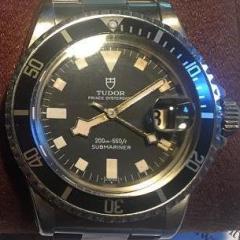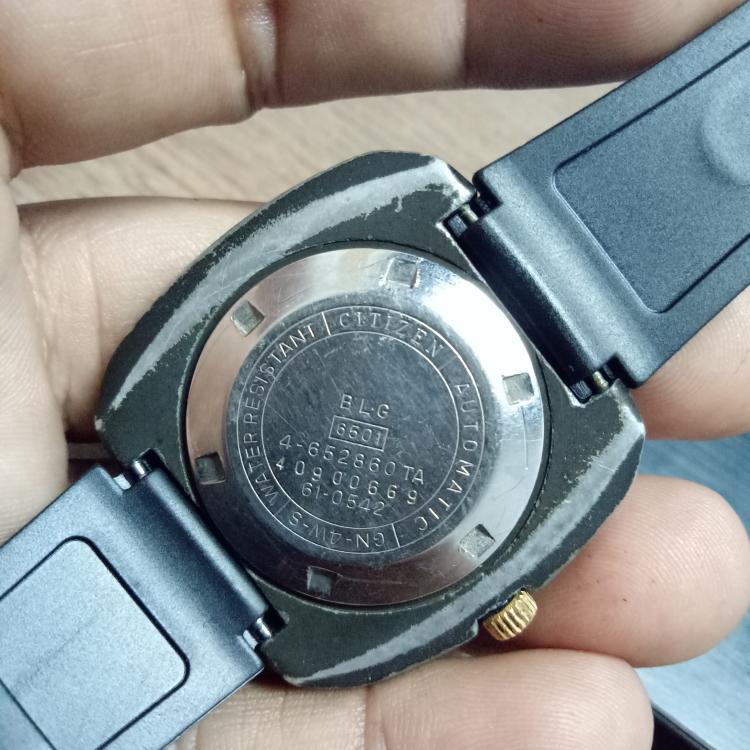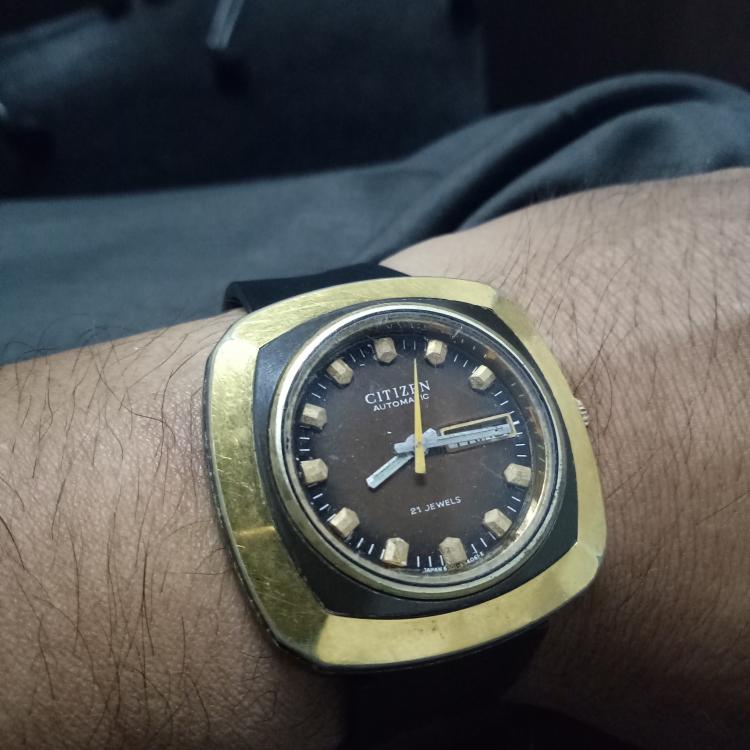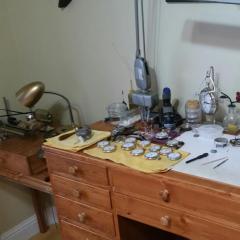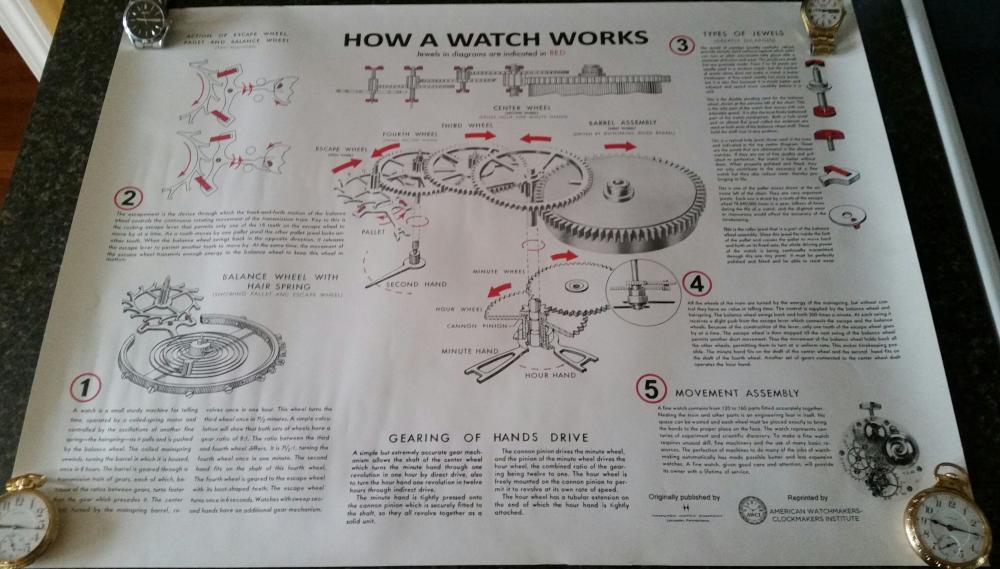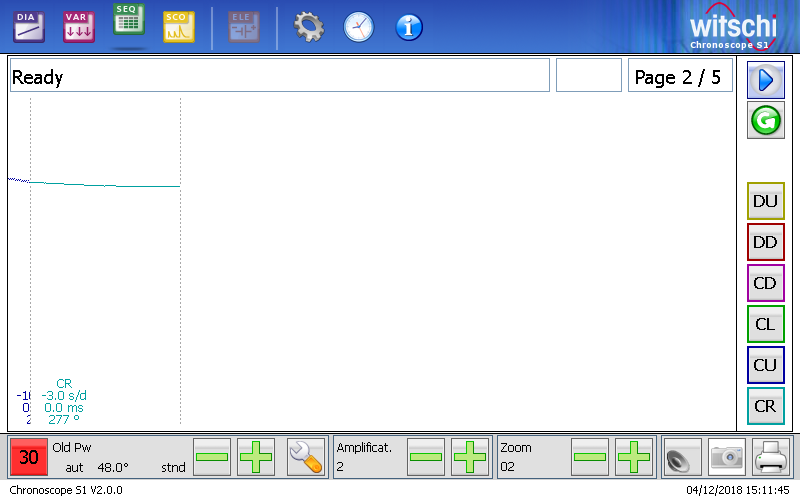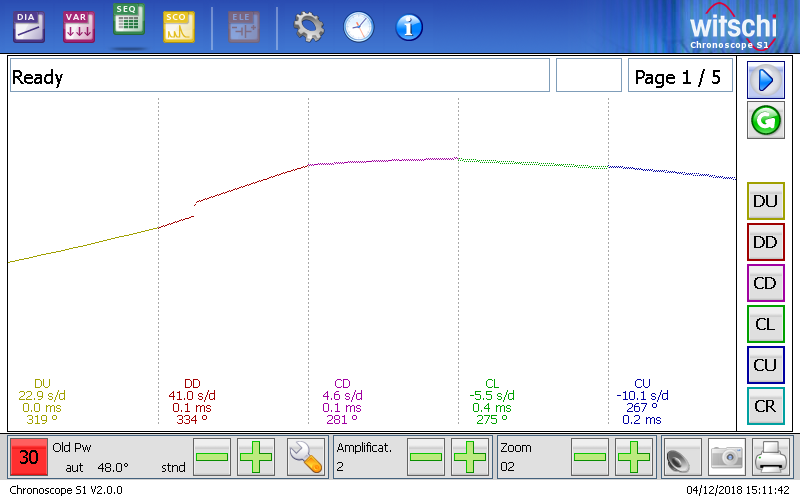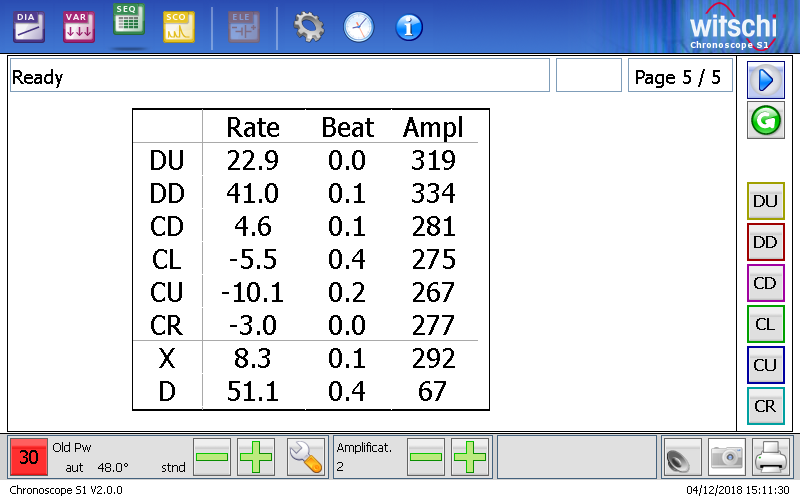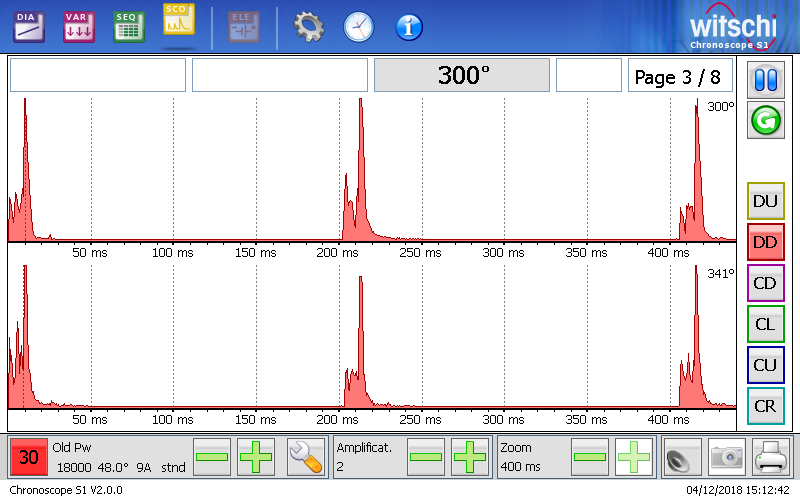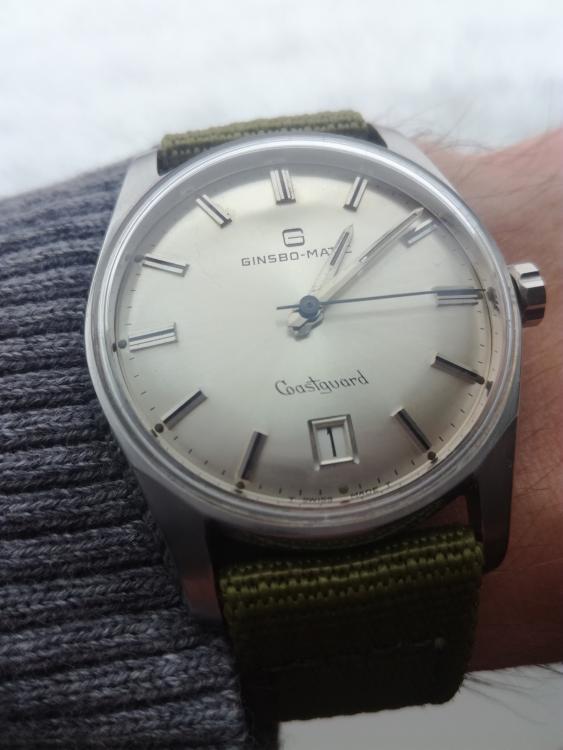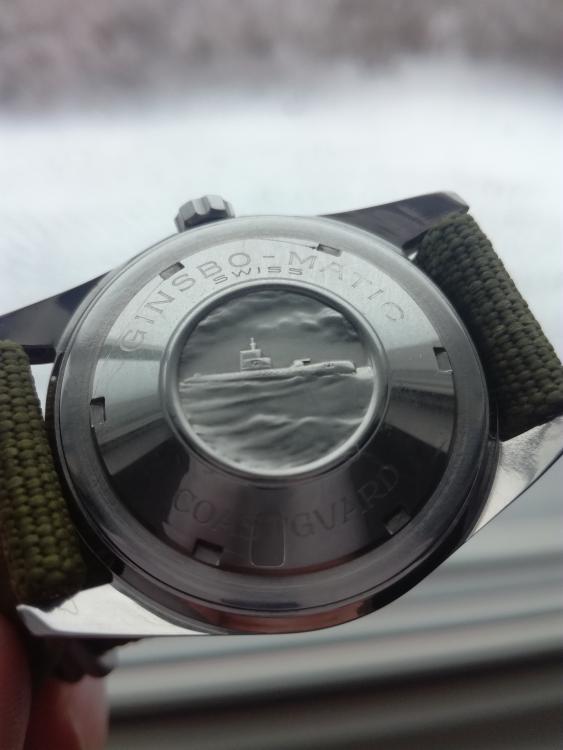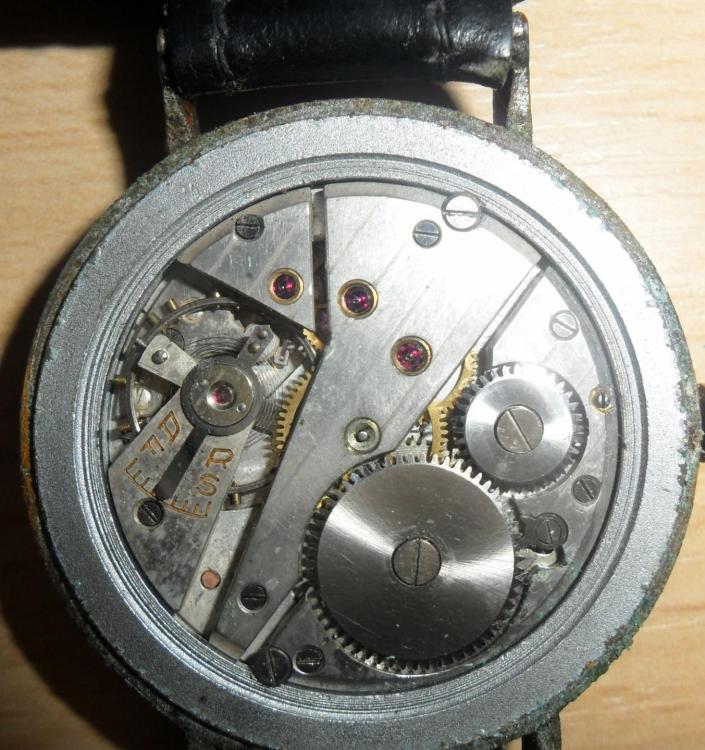Leaderboard
Popular Content
Showing content with the highest reputation on 04/13/18 in all areas
-
OK. This is the sort of thing that I might get into. I'm happy to help if I can when you get stuck. With regards to the movement, here's the easy answer: Log in and join RolexForums.com and check the for sale section. Recently a member there had (several) NOS 3135 movements for (if memory serves) $2000.00 each. That's a good price and it will have that off your plate. Yes, it's two grand, but you can easily amass that in replacement parts, assuming you don't cause collateral damage during tear-down or re-assembly... And, the upside is that the swamped movement can be retained for you to learn and work on at your leisure. I noticed a question regarding refinishing the dial. I would avoid this. These Yacht-Masters have a platinum plated textured dial. I encourage you to make friends with your local dealer's watchmaker (if they even have one on staff) and arrange a service dial from Rolex. This is ONLY done on an exchange basis, and must go through an authorized retailer. You may be able to get one through the selling members on RolexForums too- I do see loose dials there often so it is possible. I don't know if the exchange will be less than a purchase through the forum, but you should avoid refinishing because it's not a simple job (and therefore will be expensive). DO NOT buy this dial on eBay unless it is sealed in a Rolex blister pack. Fakes abound... You will need a new set of hands too. And the bezel assembly (I think the insert is Platinum as well so sit down before requesting the quote) Case restoration- you need gaskets at the very least, crystal obviously (these are easy to get) and a crown tube tool. CasKer has the tools (decent quality) for not a ton of money. The tube needs to come out, have all threads inspected/cleaned, new O-rings installed and the tube re-installed with low strength locktite (purple). Maybe you should consider new tube and crown (I would). That's a 703 crown and tube. Those can be found on eBay for a few hundred bucks pretty easily. Again, make sure they are sealed in their blister unless you are VERY sure of the seller and the part you are buying. Maybe the case needs a buff. There is no easier way to destroy a Rolex case than to take it to the buffing wheel. THIS is an absolute art, and should be left alone. Get a Sunshine cloth for the polished sides and be happy with that. Seriously. If it's really ugly, send it to a pro. Maybe ABC watchworks out west- someone who specializes in vintage stuff. They will preserve the case shape where even the local Rolex repair center may not. I do my own, but I know my limitations and those were learned the hard way... But the case needs to be absolutely clean. Tear it completely down (you will probably need the bezel removal tool in addition to the case back tool shown above) and reduce it to all it's parts. Remove all traces of old o-ring that may be present. I like Acetone for this- it may need to soak a while. All oil, dirt, old o-ring etc. must be gone. Then, assuming it is polished to your satisfaction, the reassembly process can begin. Also mentioned above (I do this exact same thing) take a picture of EVERY disassembly step as you go. That goes for the case as well as the movement. Something you were not focused on during disassembly may become critical for reassembly. This is really easy now with phones.3 points
-
Wearing a chunky Citizen this Friday the 13th!. It has a 6501 movement inside. On this example I believe the hour and minute hands have been changed, they should be gold-plated. It has a whole bunch of numbers on the back but the serial number is the one starting 409xx which means that this is from Sept '74. Citizen use the 2nd and 3rd digit of the serial number for the month whereas Seiko only uses the 2nd digit with 0, N and D for Oct, Nov, Dec respectively. The case is black anodised aluminium and I usually apply some grease on the threads when I have the caseback off as aluminum and steel can corrode badly. I like these Citizens as they are uniquely 70s in design and much better than their 'Eagle' models. One downside is the anodising wears off on the back but as its not really visible I can deal with that. Have a good weekend ahead! Anilv2 points
-
I just received my copy of the "How a watch works" poster, originally produced by the Hamilton watch company. It's now being reprinted by the American Watchmakers-Clockmakers Institute. They have two sizes available, 18x24 and 24x36. This is the smaller one, and will get framed and go in my watch room!1 point
-
I thought I would finish the comparisons of the one watch I was doing. But this does show an interesting problem which I've seen before when doing multi timing machine testing. For instance one watch two hardware-based machines then you photographed both of them together which will notice is they're averaging over different parts of the waveform. So ideally when comparing everything it be nice if we had one watch multiple computers multiple machines and then photograph capturing that moment in time or we can study it in leisure. So at home photograph on the witschi machine was first then same set up for all the software so they're basically one right after another. Then the next day or quite a few hours later the witschi at work. So I did wind the watch back up and let it run down a little bit conceivably it's not have the exact same state as when I took the initial photographs. Then notice the graphical displays are all the different? On the witschi at work they call it zoom it set to 2. My witschi at home is also on 2 but displays don't quite look the same graphically. Then changing the zoom feature does basically magnify the line. Then if you've ever noticed any time someone shows timing machine results I typically ask for it be nice to have some multiposition results in their question. If you look at the dial down position you'll notice visible gap? Then on the numeric results dial down and dial up aren't quite the same? Then notice the amplitude seems be just a little too much and definitely too much on dial down. This is what happens when the roller jewel comes all the way around it bumps into the fork on the back side.1 point
-
Looking at your readings I would say there is not a lot wrong. Personally I would just re-clean the escapement side Ie hairspring assembly & pallets. It amazing how the tiniest amount of grease/dirt can cause this issue.1 point
-
One of the problems with timing machines are they typically only auto select a limited range of frequencies. For instance a page from the 1000 manual below. So it will do 9000 except then there's the other problem. You can only go + or - 999.9 seconds Which was outside of your range. Then there is one other problem if the timing machine thinks it's timing typically a lever escapement sometimes it doesn't know what to do with things like this in wouldn't time it at all. So people who do clock repair this isn't an issue because there timing machines measure beats per hour. Then witschi this wouldn't be a problem in that it has frequency mode. In this mode you get the BPH displayed. Also if it's having issues with the escapement you can turn it to rate mode only it will only tell you the rate of the watch it will no longer calculate the amplitude or beat. This is really nice when you're having a watch that's having some bad issues and you still want to see with the rate is. Also while in frequency mode it uses that frequency for the graphical display. This is handy if you want to see what the watches doing on the graphical display and you can't see it if the angle is so extreme basically flattens out the display. So a feature that should be added to WOS Is the ability to display BPH.1 point
-
What sort of cleaning fluid are you using? The reason I ask is some of the commercial fluids have ammonia 30 minutes and you'd be etching the plates. Remember cleaning is part of watch repair cleaning doesn't fix a watch necessarily. Then " I know it looks like the hairspring is out of sorts " Are you basing this on the timing machine results or visual confirmation that the hairspring is not right? Then when timing on the timing machine it's usually nice to have different positions. Wristwatch versus pocket watches slightly different. So for both dial-up and dial down are nice. Pocket watches would have their pendant up and wrist watches the crown down. Timing in multiple positions helps you identify problems things don't always show up in one position. Then if you're looking for timing issues because the balances not evenly poised you would usually do a minimum of four pendant/crown positions. But I wouldn't worry about all those positions for now. For now dial up, dial down and crown down. Then the photograph below isn't the best of your watch it looks like the stud is on a movable arm. If so you can put your watch in beat as 3.3 ms for a wristwatch it should be much closer to zero. Then the random dots look random so I wouldn't worry about them for now. Cleaning the watch again isn't going to help. Then for lubrication how to do lubricate the watch particularly the escapement and where did you lubricate. http://www.ranfft.de/cgi-bin/bidfun-db.cgi?10&ranfft&0&2uswk&Marvin_5651 point
-
Yes, that's a good point and admittedly I didn't really think a lot about the lathe bearing as in my case this was a one-off. The lathe is the most expensive tool in your kit so best to take my advice with a grain of salt. In my case I didn't need a cross slide to knurl the knob I turned- simply bringing the knurler in contact with the nob while turned on the lathe was enough to cut the coin edge. It took a little less than a minute but it's important to note, I was working with soft brass; here's a pic for reference:1 point
-
Its been tough finding good watches at the right prices on ebay the last few years with even crap watches asking silly money. The shipping costs have also escalated sharply, I particularly dislike the added customs charge fee. I have never been charged anything for used watches I have received thru the post and would definitely prefer paying if and when I am charged. Anyway, if you are careful and know what you're bidding for there are some bargains to be had. I recently bought this Certina Bristol for not much money and I would like to share some hints about what to look for. This is a 25-66 movement and it built inhouse by Certina and while they are not really cheap when fully working, I believe they are undervalued and are really good value for money, This is the sellers picture about the watch, a bit of patina and the seconds hand is missing. While the seconds hand alone is not a problem, you need to ask yourself why was it not replaced as someone obviously had the back off to get the seconds hand out? One possibility is the tip of the seconds hand may have broken off. While parts for Certina are available this will add unnecessary problems. Looking at the photo again I can see the remnants of the centre-pinion (whitish dot in the middle). Another pic from the seller. My guess is that the pinion is good. Moving on to the backside of the watch. Not much to see here except that the previous watch maker was a bit clumsy opening the caseback. It still has its original crown which is always nice to see! The movement looks pretty clean, sometimes the damage patina on the dial can indicate water damage but since the stem is pretty rust free I would say its just the lacquer breaking down. Nice regulator, sign of a quality watch! I bought the watch about a month back, it has arrived at my friends shop .. I need to collect it. Finally the description. The most important is that balance wheel is good. This does not mean there isn't a problem elsewhere.. It could be a broken mainspring or messed up hairspring. Straightforward and to the point. No mention of being rare or collectible , just needs servicing yadda yadda.. Finally check the seller, In this case its YDL Worldstore.. all good! So I made a bid and won it for USD31+USD15 shipping.. Total USD46. What I get will be an interesting watch with a good quality movement that hopefully a COA will bring back to life. I should have a seconds needle in my box of parts but I might need to change the seconds pinion, we'll see about that. Of course there may be other problems like broken train pivots, cracked jewels etc but that's part of the gamble! I will probably get the watch back this weekend and will post further here. Stay tuned. Anilv1 point
-
1 point
-
Very nice watch! I believe Ginsbo went on to become Pagol which was a popular brand in Asia. Similar for Felca which became Titoni. Anilv1 point
-
Its not if, but when. Just take your time and keep a positive mental attitude. I find regular breaks a necessity, even if I want to keep working, I force myself to take a break. Stroke your cat I do. He's a handsome moggy you have there! regards Deggsie.1 point
-
Thanks Deggsie for providing this procedure. The watch does not have a beat adjustment but I have seen Mark's video on tweaking the hairspring hub. I just hope I'm able to make it to that point.1 point
-
This is how I do it: - -With the tapered brass pin removed, reassemble the stud into the balance cock and secure gently with the screw. - Install the balance wheel complete with the hairspring onto the jewel in the base plate. - lower the cock into position, lining up the pivots and install the screws The balance will now be free to rotate un-tethered by the hair spring, but try to avoid this, as damage can occur to the free end of the hairspring. Now, carefully rotate the balance wheel so that the free end of the hairspring travels towards its home-to-be in the stud hole. If all is lined up correctly, the free end of the hair will now go straight into the stud hole, like threading a needle. Do not try to move the free end of the hairspring with tweezers if its off the target. Its hard work, and ends in tears. Instead, rotate the balance backwards, thus moving the free end of the spring away from the stud and creating yourself some working space. Gently tweak with tweezers. rotate the balance wheel forwards again and repeat process until that hairspring threads itself through the stud with your eyes shut. Now, with the spring engaged so that its just starting to show on the other side of the stud hole, you can now reinsert the brass taper pin and lock the hairspring to the stud. Note that due to the hairspring now being slightly shorter than before, and all other things remaining the same, in theory the oscillation (vibration) rate will be faster so you will need to regulate the watch again. Also, the roller jewel will be slightly off center position (watch out of beat). Does your watch have beat adjustment? If not and you are really trying to perfect the movement, then you need to tweak the hairspring hub on the balance staff. Mark Lovic beautifully describes this in a video on here - but I cannot find the link just now. Can someone assist please? I hope this helps?1 point
-
Not true! Someday soon I'll have to put together a walk through to demonstrate how this is done, both the factory recommended way, and taking a movement to pieces. It is not easy, as they are full plate movements, but so are a lot of other watches of historical interest. Cheers!1 point
-
What about this lot? Any good? They look a lot like the winders shown by rogart63. What about winding direction? I'm under the impression some winders have a "pin/peg" rather than a hook (no?), to be able to accomodate both left and right mainsprings.1 point
-
A safer route would be a small pin vice, less chance of damaging the screw...1 point
-
Use a small pair of side cutters and grip the edges. I've used a pair of nail clippers before! Anilv1 point
-
I was just given sound advice. Watch repair is a skill that takes many years to acquire. Also a Rolex is not for the faint hearted. All Rolex parts are not only extremely expensive they are very hard to source. If your watch has had water ingress the movement parts are highly likely to be rusted and they will need replacing. By the time you have added the cost of parts & dial re-furb it won't be far short of purchasing a replacement watch IMO.1 point
-
1 point
-
1 point


